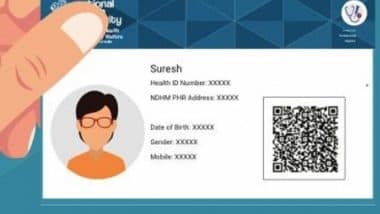PANDAS is an acronym stands for Paediatric Autoimmune Neuropsychiatric Disorders, associated with streptococcal infections. It’s an autoimmune psychiatric disease that affects children and is caused by the bacterium Streptococcus pyogenes. A child could be diagnosed with the illness if he or she shows some signs of obsessive compulsive disorder along with fever. According to the National Institute of Mental Health, the symptoms of the disease happen overnight and out of the blue. They could include vocal tics, obsessive behaviour and irritability. Here’s what every parent should know.
Causes of PANDAS
The strep bacteria evades the immune system and hides inside the body without detection. It manages to avoid getting destroyed by mimicking the structure of the molecules found in childrren’s heart, joints, skin and brain tissues in a process called molecular mimicry. Children Health Advice: Expert Reveals 10 Signs That Your Kid May Be Suffering From Bone Health Problems And Tips To Deal With It.
When the immune system finally detects the bacteria, it generates antibodies that attack the bacteria, but also end up targeting the child’s healthy tissues since the bacteria mimics them.
According to the NIMH, cross-reactive “anti-brain” antibodies generated by the immune system, targets the brain tissues of the child, resulting in OCD-like behaviour, tics and other psychiatric symptoms.
Symptoms of PANDAS
The symptoms of the disease tend to develop overnight. Here’s a list of PANDA symptoms:
• Obsessive-compulsive actions
• Tics or sudden facial contractions
• Hyperactivity
• Jerky movements that the child can’t control
• Panic attacks
• Separation anxiety
• Hallucinations
• Screaming and mood changes
• Depression
• Sleep disruption
• Loss of appetite
• Joint pain
• Frequent urination
• Deterioration of motor skills (change in handwriting)
• Abrupt worsening of symptoms
If these symptoms have lasted more than a week, a blood test will determine if the child has suffered from streptococcal infection before.
Risks of PANDAS
PANDAS is a paediatric illness, which means it is common in children. Some factors increase the child’s risk of the disease:
• Age of the child (between 3 and 12)
• Having a history of strep infection in the last four-six weeks
• Genetic predisposition
• Weather conditions (between fall and early spring)
Treatment of PANDAS
The disease has both physical and psychiatric manifestations of the symptoms. So the treatment would be two-pronged.
Since PANDAS is caused by the bacteria Streptococcus, antibiotics are the preferred mode of treatment. The doctors will take a throat swab of the child to determine the presence of the strep bacteria. If the test turns positive, the child will be given a single course of antibiotics to get rid of the infection. Four such drugs – amoxicillin, azithromycin, cephalosporin and penicillin – are used for treating PANDAS.
To manage the psychiatric symptoms, doctors prescribe cognitive behavioural therapy. Antidepressants are also given to manage mood disorders associated with PANDAS.
How To Prevent PANDAS
To ensure that the child doesn’t get re-infected with the disease, parents should follow the antibiotic treatment without missing doses.
Sterlising or replacing toothbrushes and other oral hygiene products of the child will prevent re-reinfection. Carry out a throat culture analysis on family members to ensure that the child isn’t getting infected by a family member who’s a “strep carrier."
(The above story first appeared on LatestLY on Dec 19, 2018 03:55 PM IST. For more news and updates on politics, world, sports, entertainment and lifestyle, log on to our website latestly.com).













 Quickly
Quickly




















